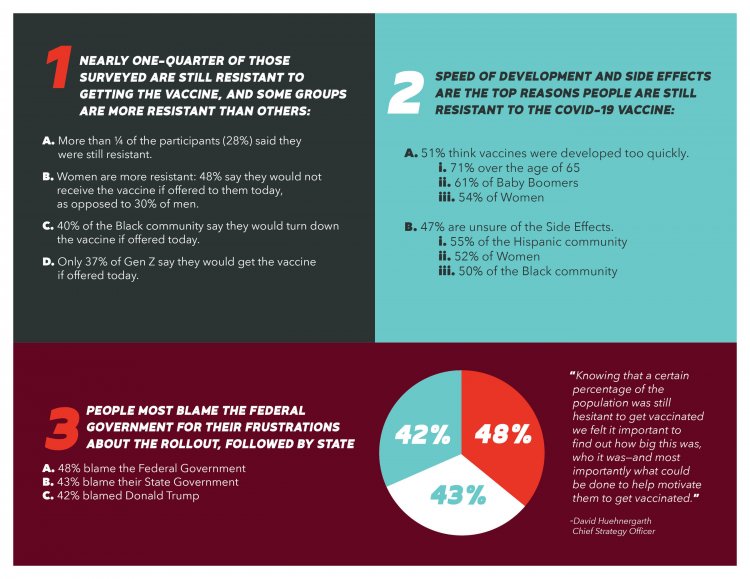Research Study Shows Lack of Information Driving COVID-19 Vaccine Hesitancy

PHILADELPHIA: Women, the Black community and Gen Z are the three groups most likely to resist receiving the COVID-19 vaccine, according to a recent study conducted by LevLane.
The study of 471 adults was conducted to gain insight into which groups are most resistant to the vaccine, why they are wary, and what can be done to overcome their worries.
"We know there is hesitancy around this vaccine, and we wanted to understand what was driving that hesitancy," said Kendall Gay, Vice President of MarketVision Research. "What we found was not surprising, but very interesting to see how the story developed as we broke the data into subgroups."
The research found that more than a quarter of participants are resistant to receiving the vaccination citing concerns around medical privacy, levels of confusion and unfavorable reviews of the rollout. Nearly half of the women surveyed, 48%, said they would not receive the vaccine if it were offered to them today, with 30% of men who would also refuse.
The study also identified the reasons for the hesitancy, with 51% of participants saying the vaccines were developed too quickly, and 47% being unsure of side effects.
"The size of this population surprised us, as well as some of the groups that were more resistant," said David Huehnergarth, Chief Strategy Officer at LevLane. "But one thing was abundantly clearthey're hesitant due to worries/concern about side effects and they want more information from federal and state government about them."
While this presents a real challenge to federal, state and local authorities, the remedy appears to be simple: Provide clear and transparent information addressing the areas of concern, which revolve primarily around side effects and long-term immunity.
Part of the solution will require these government agencies to change how they are communicating and through what channels as many respondents cited communication preferences largely left out of vaccine communication plans.















































